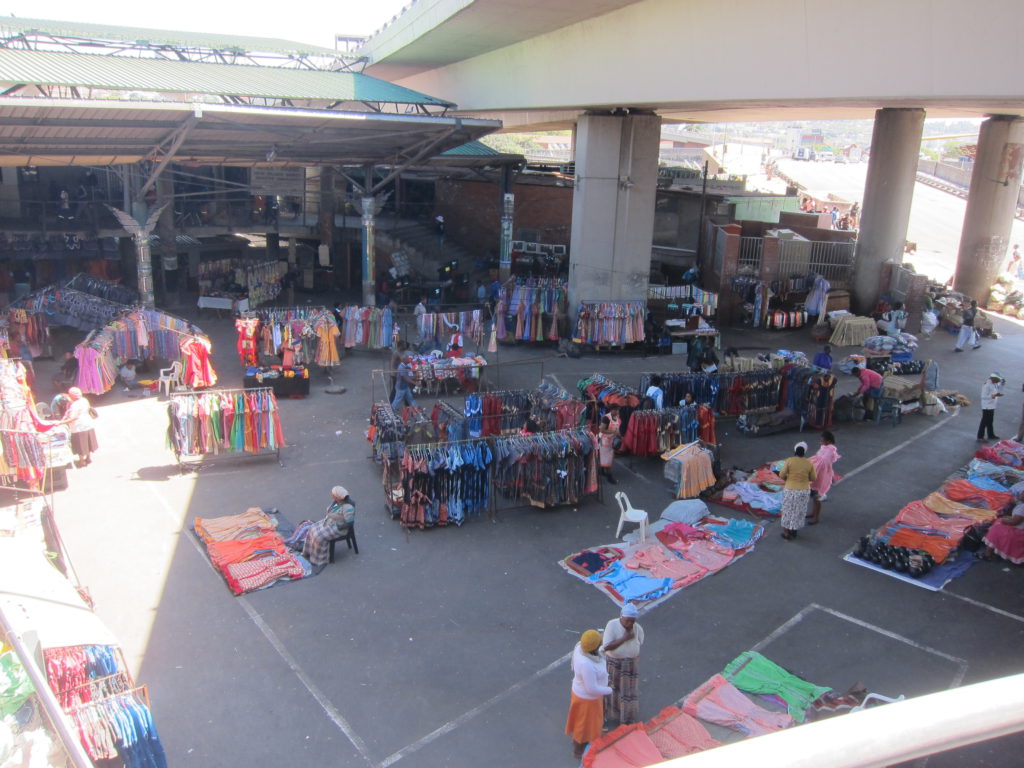By Erik Lønne
As elsewhere in the greater Durban area and the rest of the province, the storm of 10 October was felt with full force in the Warwick Junction and the Central Business District. What started out as any other day, quickly turned into chaos and destruction through the morning and afternoon hours, considered one of the worst storms in decades to hit the Province. And also — interestingly — almost to the day, one hundred years after what has become known as “The Great Flood” of 28 October, 1917, where a staggering four hundred people lost their lives, many of whom where market gardeners, that sold their produce in the street markets.
Walking around Warwick this week, with the most recent storm fresh in mind — the routines, sounds, smells and people seem to be back to a state of normality (…)
Walking around Warwick this week, with the most recent storm fresh in mind — the routines, sounds, smells and people seem to be back to a state of normality, although there are visible and less visible marks of what has just happened. Something that has left traders and workers in the markets with first hand knowledge of the destructive powers of the extremities of the Durban weather.

Back to ’normal’
In their usual spot, just like any other Monday, Dillon and Romilla are selling spices from their stall in Early Morning Market. “We just opened again today”, Dillon says, losing five days of work and income, before adding: “it just wasn’t possible before”. He takes us in to his stall and shows us the level of where the water was, up to his thighs, and points down the main avenues of the market. He explains how water filled up both the main lanes in the Early Morning Market.
“We just opened again today”, Dillon says, losing five days of work and income (…)
Although he and Romilla store their goods in the kiosk, and therefore have no travel time to a storage facility, they could not save everything. “I believe I have lost just around R5000 worth of goods here”, he says.

Underneath the highway
We walk further, through Berea Station and on to Brook Street Market, which seems to be buzzing as usual. As it gets close to Christmas, the activity in Warwick skyrockets. Nozipho Chili, a trader on the lower level of Brook Street Market, tells us the water here fortunately did not exceed the level of her table. On the day, she quickly gathered her goods in her wooden crate and wheeled it of to her nearby storage.
Although Nozipho and her goods got away relatively unharmed, the storm took its toll on both people and infrastructure all around her. She explains that in the public lavatory just next to her table, a municipal worker sadly lost her life as a wall collapsed on her. Although the Traders Against Crime (TAC) were on site attempting to help, her life could not be saved.

Down yet another level, beneath the highway, the situation was even worse for the women of the Lime and Impepho market. One of the traders, Violet Kwakwede, is now back behind her table, although with a somewhat less impressive pile of Impepho than usual. “Most of the stock was thrown away, as the water damaged it”, she says. Adding together the lost work time and goods damaged, it’s estimated that Violet and her co-workers lost approximately a week’s worth of income.
Adding together the lost work time and goods damaged, it’s estimated that Violet and her co-workers lost approximately a week’s worth of income.
Infrastructural challenges
Impressively, Violet tells us that she set up her table again the very next day after the storm, and goes on to point to her knee caps to show where the water was last Tuesday.

Although it might not be likely that a storm as powerful as this one will hit Durban again soon, we ask what she will do if this happens again; to which, she replies: “There is not much to do, it’s beyond me”. Violet goes on to point to the ground beneath her feet and the lack of ceiling above her (only sheltered in certain spots by the overarching highway lanes), and explains that if the drains would work properly and if there was sufficient shelter over their heads, the situation might have been different.
There is not much to do, it’s beyond me.
Changes needed
For Asiye eTafuleni’s own part, the storm and rains left the offices clearly wounded. But with excellent efforts from team members, it was restored to working order within a short time, and with only a few bulging floor boards and cupboards left soaked as overt reminders of the chaotic day.

For the traders in the markets of Warwick and the CBD, the situation of course, is quite different; being for the most part, left to their own devices. And the aggressive weather of last Tuesday serves as yet a powerful (and painful) reminder of the need of infrastructural interventions towards securing more sustainable livelihoods for the informal workers of Durban.


